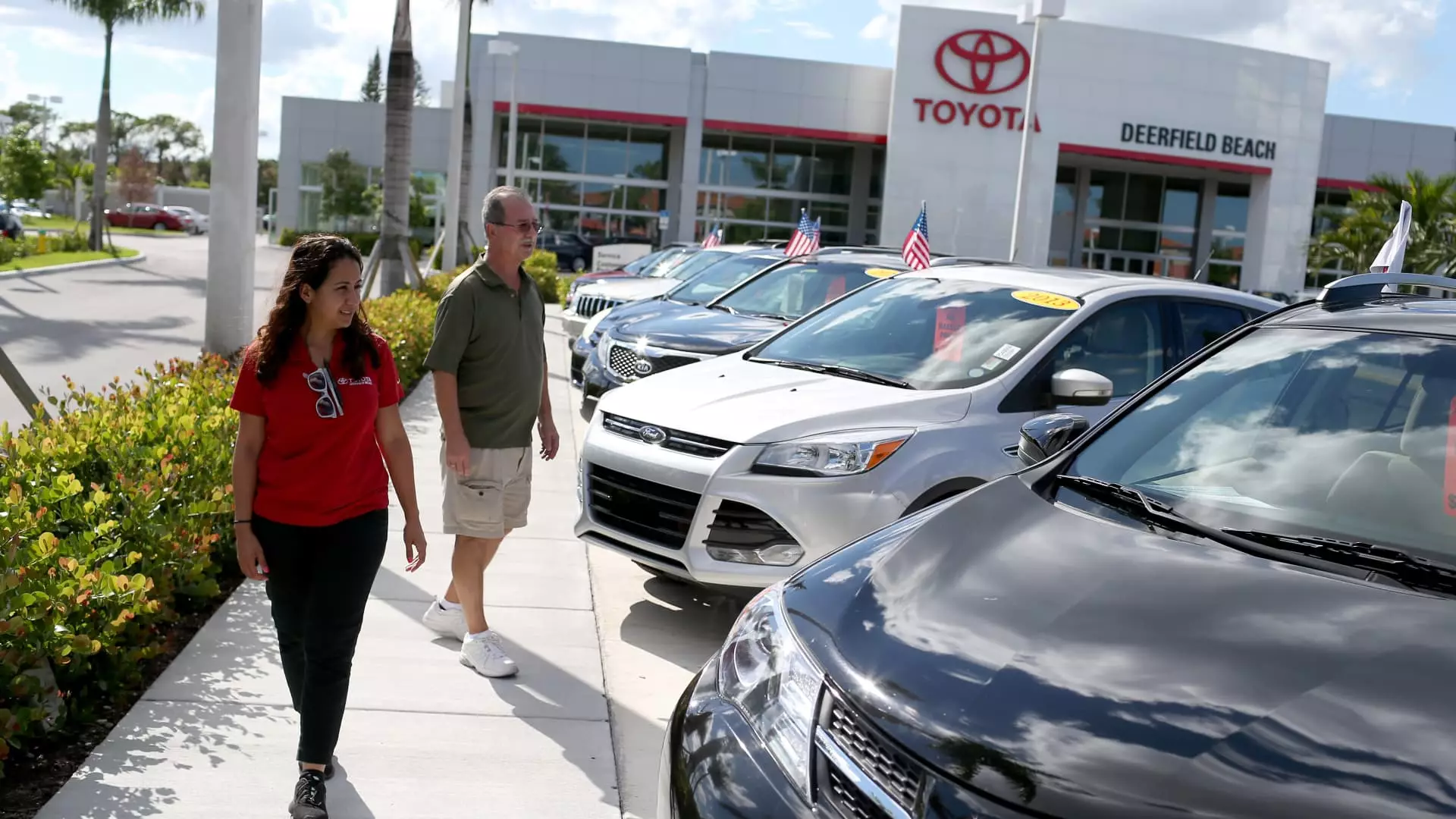The American automotive landscape is undergoing seismic shifts, largely influenced by the controversial tariffs imposed by former President Donald Trump. Set at a staggering 25%, these tariffs threaten to inflate the prices of both new and used vehicles, while also fundamentally altering the purchasing dynamics within the automotive sector. As industry experts at Cox Automotive caution, the economic landscape for car buyers looks precariously unstable, creating an atmosphere rife with uncertainty.
The Price Surge Dilemma
The implications of the tariff are not merely a minor inconvenience but potentially an avalanche of financial consequences for American consumers. Cox Automotive forecasts that buyers can anticipate an average price increase of $6,000 on imported vehicles and $3,600 on those manufactured domestically, partly due to additional tariffs on automotive parts. These steep price hikes come on the heels of earlier tariffs on steel and aluminum, which have already squeezed manufacturer margins. In a market that increasingly revolves around consumer sentiment, the impact of such increases could not be more detrimental. Buyers who may have been on the fence could now find themselves priced out of purchasing a new vehicle altogether, accelerating their decision-making process toward the used car market, which in itself is becoming increasingly volatile.
Used Vehicle Market in Turmoil
Speaking of used cars, the turmoil does not stop there. The prices for used vehicles are also expected to see a disturbing upward trend, with estimates indicating increases between 2.1% and 2.8% by year-end, driven by the ripple effects of new car pricing dynamics. Traditionally, the used car market has been perceived as a more affordable alternative, yet skyrocketing prices call this status into question. The average used vehicle price, already hovering around $25,000, creates significant barriers for families and young professionals seeking affordable transportation options.
Furthermore, the ongoing fluctuations in supply and demand will only serve to complicate matters further. As reported by those within the industry, many dealerships are grappling with a scarcity of used vehicles for sale. The implications are alarming—dealers are made to turn to auto auctions, driving up wholesale prices just as they did during the chaotic period of the COVID-19 pandemic. The fear is palpable; without drastic intervention or a shift in marketplace dynamics, many potential buyers will find themselves squeezed out of viable options.
Production Decisions Under Duress
In a tortuous cycle, the tariffs have compelled automakers to rethink their production strategies. Companies like Ford and Stellantis are initiating temporary price agreements to ensure that consumer demand does not plummet too catastrophically. Conversely, some foreign manufacturers, such as Jaguar Land Rover, have halted shipments altogether. While these strategies might offer short-term relief, they expose a deeper vulnerability within the industry that could lead to dire consequences in the long run.
The prophecy of production cuts isn’t merely speculation; it has become a tangible reality as manufacturers wrestle with increasing operational costs and dwindling consumer interest. Even though the tariffs are not directly targeting used vehicle sales, the interconnectedness of the automotive ecosystem manifests in uncertain consequences for buyers across the spectrum. In essence, the recent policy decisions threaten to stranglehold an industry already grappling with multiple external pressures, from supply chain disruptions to fluctuating consumer demand.
Market Predictions vs. Ground Reality
Market analysts warn that we should brace ourselves for a rollercoaster of pricing volatility in the coming months. With the increase in wholesale prices typically influencing retail pricing practices, consumers may not see the decline in prices that might logically follow a downtrend in new vehicle availability. Instead, projections suggest that the chaotic influences of tariffs and consumer hesitancy will create a baffling pricing structure, leaving many American families frustrated and unsure of their options.
The automotive landscape in 2023 is more akin to a precarious chessboard than a simple marketplace. Each move by automakers reverberates through the lives of everyday Americans. Those who point to free-market principles may argue that it will stabilize over time; however, optimism appears unwarranted in a context where fundamental economic elements are dramatically fluctuating.
Consumers are left with a daunting choice: adapt to inflated costs or make sacrifices in their daily lives. As the industry grapples with these profound challenges, we are reminded of the delicate balance between policy decisions and their tangible impacts on the American public. The stakes have never been higher, and the looming reality of these auto tariffs could potentially reshape not just the market but also the economic fabric of our nation.

